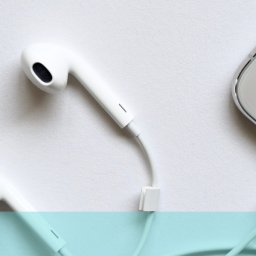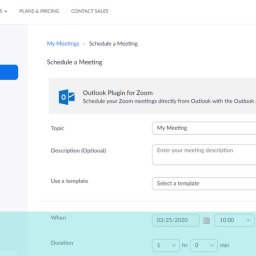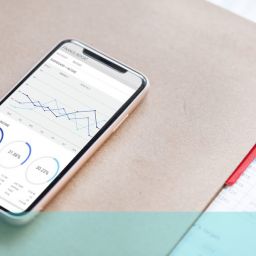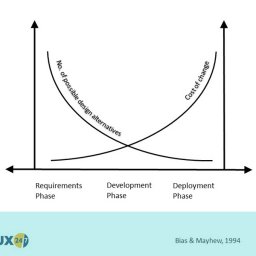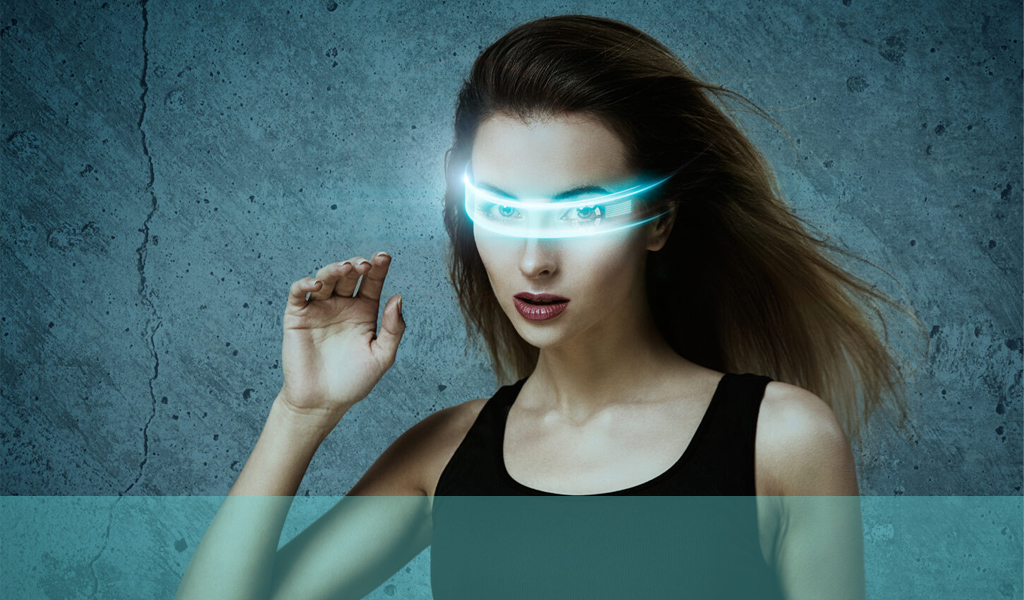
Eye tracking has been around far longer than you may think. The earliest eye-tracking device surfaced pre-1900, and ever since, they’ve been used to capture how, when, and how long people look at things—to gather data on the focus of our visual attention. However, it wasn’t until the end of the 1990s that marketing and advertising agencies started to take advantage of what it could tell them about how users interact on the Internet.
Eye tracking, smaller screens, and the COVID pandemic…
Technological advances have played a significant part in how eye trackers measure eye movements and how they impact studies, some of the most significant being accelerated by the COVID pandemic.
With more people working remotely, the option for lab testing became incredibly limited, and with remote testing becoming such a popular and essential part of UX research, the solutions had to come from a shift in technology using the devices users already had.
Aided by the relentless and continual development of our devices’ capabilities (with many models’ front-facing cameras and webcams offering significantly high resolutions), using AI and machine learning to improve accuracy, the opportunity to monitor such small device screens without specialist equipment has made remote eye-tracking research not only simpler to manage but more affordable and far-reaching.
Enhancing the smartphone eye-tracking system was crucial, as mobile phone use—already a huge component of UX given their popularity—saw the pandemic boost the number of older generation users turning to mobile phone technology to carry out tasks such as grocery shopping, online ordering, video calling, social conferencing, and more.
The development of such new and accurate eye-tracking software has allowed us the option for remote testing with users in their natural environment, demanding a shift in how we set up and deliver eye-tracking services outside the laboratory environment.
The definition and importance of eye tracking
Eye tracking measures eye movement. It monitors and measures minute eye movements to see where, when, and how long a user is looking at particular areas of interest and the path they take moving from one area to another.
As well as optical tracking, many modern eye-tracking devices measure pupil dilation in the user’s eyes, which can suggest changes in concentration or emotional state.
Despite its value to UX research, eye-tracking technology has been utilised in many other fields to provide a greater understanding of user behaviour, both conscious and subconscious.
- Neuroscience – Gaze patterns are analysed to explore cognitive processing, learning, and memory.
- Medical research, psychology and psychiatry – Eye tracking is used to research emotional states, facial cues, and much more.
- Learning and education – More recently, eye-tracking research has made its way into educational science to monitor student and learning behaviours.
- Retail navigation and in-store testing – Understanding customer navigation around stores and product layouts.
- Market and consumer research – Brands utilise eye-tracking data to explore how customers view marketing messages.
- Product development and packaging – Package design is A/B tested with eye tracking for critical areas of visual attention.
- Driving and other transport simulators – Typically, using eye-tracking glasses, simulators provide opportunities to study visual awareness of driving/transport hazards and road safety.
- Gaming – Eye tracking is being trialled to control character movements and behaviours and test gameplay elements, interactions, and the gaming experience.
- Human computer interaction – From desktops, laptops, tablets, and smartphones, eye-tracking studies drive how we build computer systems.
- Website and app testing – Eye tracking metrics are often crucial to user experience, uncovering problems and pain points that may be overlooked or undetectable without it.
Of course, we’re predominantly interested in UX research, user interactions, and usability testing, so that’s what we’ll be focussing on today.
Eye tracking technology
Dedicated eye-tracking systems come in three main forms that run on near-infrared technology and a high-resolution camera:
- Screen-based or desktop hardware boxes
- Eye-tracking glasses (also, slightly confusingly, known as mobile)
- VR headsets
However, as mentioned, modern mobile devices now have sufficient hardware to work with the latest advanced software to conduct eye-tracking studies, even on such small screens.
Before the recent upgrades enabling more accurate use of mobile cameras and webcams, eye-tracking technology used near-infrared light and a high-resolution camera to track the centre of the pupil using pupil centre corneal reflection (PCCR). Infrared light is used as it isn’t affected by the visible light spectrum, providing less noise and interference. It enters the pupil yet is reflected by the iris; this enables the device to monitor gaze direction and pupil dilation accurately, providing a far clearer contrast for the calculations carried out by their algorithms.
Screen-based hardware is located in front of the user’s screen, allowing the user a limited amount of head motion, the range of which is called the headbox.
Eye-tracking glasses, however, have cameras and infrared light units built in. Being unaffected by head movement, they provide greater ease of motion, ideal for location studies such as retail store navigation.
What does eye tracking measure?
Eye tracking metrics include:
- Gaze points – The basic unit used to measure the gaze location and the direction of a user’s gaze.
- Fixation – A number or cluster of gaze points at the same location. The period it lasts is known as the fixation duration.
- Saccades – Eye movements between fixations. For example, the small jumps our eyes make when reading text or trying to scan fast-moving objects.
- Perceptual span – The number of characters typically recognised between saccades (usually 17 to 19, depending on the text)
- Smooth pursuit trajectory – Smooth eye movements following slow-moving items.
How we organise eye-tracking data:
- Heat maps – A colour-coded method to display static or dynamic aggregations of gaze points and fixations. Coloured areas (that look like colourful inkblots or blobs) are arranged from red (high number of gaze points) to green (low number). Eye-tracking heatmaps highlight increased interest in a user’s attention.
- Areas of interest (AOI) – Areas of interest show specific elements of visual attention, whether objects or people in images, videos, web pages and interfaces.
- Fixation sequences – The path of fixation points, showing what they were looking at and for how long.
- Time to first fixation (TTFF) – The time taken for the user to deliver the first fixation from the introduction of the stimulus. This tests reactions to attention-seeking elements or how users search for particular items.
Advanced eye-tracking data:
- Pupil dilation – Pupil dilation and constriction happen in response to light or other stimuli. A change in pupil size can suggest a change in emotional arousal or cognitive workload.
- Distance to screen/user position – Moving closer or further from the screen can suggest interest or focus.
- Blinking – Blink rate can suggest changes in attention and concentration. Low blink rates suggest higher concentration, whereas high blink rates can indicate drowsiness or low attention focus.
Limitations of eye tracking
As fascinating and revealing as eye-tracking research is, it can’t tell us what users perceive and why they’re scanning pages the way they do.
Many of our reactions are subconscious, and even though we may look at an item, we might not mentally acknowledge it despite eye-tracker records suggesting we have. How many times have you looked straight past something in your sight line? We’re often suspected of missing what’s in plain sight, and it also doesn’t account for what users might see in their peripheral vision. To combat this, we might include an audio description by the user or a questionnaire in an eye-tracking study to reinforce its information.
The role of eye tracking in UX research
As with most UX research methodologies, our role is to explore digital products, their features, and their operation for problems, pain points, and their associated solutions to deliver higher satisfaction rates and a better user experience.
Eye tracking delivers valuable insight through direct observations of how they interact with the visual elements on each page. Whether monitoring a page layout or a specific task, the path and prominent areas where the user focused their attention reveals how well navigation and user interfaces work, the strength of a call-to-action, or where users fail to understand how an element should work.
Conclusion
At UX24/7, we have the same outlook regarding eye-tracking research as every other methodology: its data can only offer the valuable insights we need if done correctly. We subscribe to the Norman Neilsen Group methodology when conducting eye-tracking studies.
The evolution of eye-tracking software and hardware has made remote eye-tracking studies far more accessible (and in the user’s natural setting), helping to reduce the cost of studies and opening up options for wider test pools around the globe.
Our user research experts are available to help you get closer to your customers. If you would like to arrange a no obligation call, get in touch by emailing us at hello@ux247.com or share your requirement using the form below.


